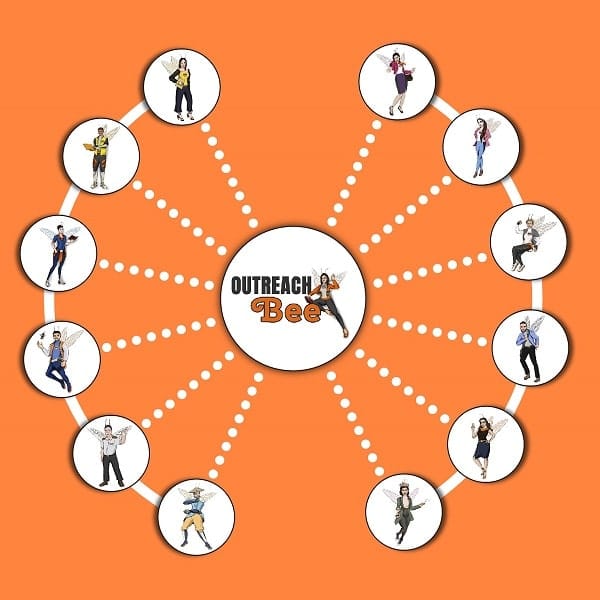Any business big or small, regardless of niche, must have a proper presence online. You won’t go far without having a neat website, and those who are just starting out often don’t know “where to jump” when they face a necessity to get a website.
The good news is that you don’t necessarily have to pass the matter on to the developers or third parties. In many cases, you may even handle the entire thing yourself even if you don’t have much experience. On this page, we’ll explain what needs to be done to create a site for your small business and give handy tips. Let’s begin!
1. Start with a Domain Name, Hosting Provider & SSL Certificate
Once you’ve finalized what your company will be doing and what you’ll be offering your clients, there are a couple of things you’ll need to take care of. The thing is that the site itself and the money you’ll need to invest in getting one will depend on:
- the complexity of the future site,
- the design you choose,
- the volume of the site (i.e. number of pages and how “weighty” they are),
- how progressive and intricate the functionality will be,
- among other things.
Thus, if you need a simple website that’ll only serve the purposes of introducing users to your business (in the so-called “business card” format), you won’t need a sophisticated and technically-rich site, a small several-page one will be enough. On the other hand, if you’re in need of a quickly working eCommerce website that’s well optimized for mobile devices and that contains many fancy features, this will require a totally different approach.
So where do you begin?
A few words about domains
Any website needs a domain name, this is the address that the site has. Users will reach it either by typing it in directly in the browser or by following a link from a search engine, social media page, site, or any other place where it’s indicated.
When it comes to the domain, the ones ending in “dot com” are still considered to be the best ones. The other rule here is the shorter the text is, the better. Ideally, your brand name must be part of the domain too. So, you can think of the one you want and select the best-matching domain from those that are “vacant”.
What’s an SSL certificate?
Provided that you’ll have an online store that sells products, you’ll be obliged to obtain an SSL certificate. The “secure sockets layer”, or SSL, basically gives you permission to accept the payments that people make on your website, confirming that your site is safe. You have to make sure that the site is secure since you’ll be taking responsibility for the card data of your customers.
Hosting providers
At this point, you’re probably wondering where do you get a domain and an SSL certificate? This brings us to the third point that regards hosting and which packages they offer.
In essence, hosting is the storage where your site will be kept. All your pages, content, etc need to be placed somewhere, right? And there are various hostings to opt for from simple shared hosting solutions to VPS hosting to complex dedicated hosting and even cloud ones.
The plus side here is that there are many hosting providers that have pre-set plans that already include an SSL certificate, domain name, and hosting, so you won’t need to worry about getting them all in different places.
To give you a couple of examples of such all-inclusive hosting plans that you may consider getting for your small business:
- Bluehost offers the full package with the three points mentioned in this part of the guide for under 7 USD per month.
- HostGator has a Business plan with all the above for under 6 USD per month.
2. Find a Platform
As shortly mentioned before, the size and complexity of your to-be site and the course of your business function will influence numerous choices that you make, including the platform on which you’ll build the site.
- If we’re speaking about the “business-card” site format, then you’ll be good to go with simple WordPress.
- If you need a small eCommerce store, then you can opt for the solution that combines WordPress and WooCommerce. Such WordPress-based store installation is often included in hosting packages by default and is easy to build even for those who aren’t technologically witty.
- For mid-sized stores, BigCommerce is considered an optimal option.
- For larger ones, Shopify is a preferred choice.
- And what’s for heavy highly-customized stores, Magento is usually the path to take.
3. Put Together a Site
Now that you’ve settled on the technicalities, you must move on to constructing the site. If we take the WordPress + WooCommerce combo, you’ll most likely have no trouble whatsoever with building the site by yourself as pages are created on the basis of templates in block format. Whereas for cases like Magento, you’ll need to turn to the developers to create the website, there won’t be an alternative option.
For the sake of this article, let’s assume that you’ll go with a simple DIY format when you’ll be the one assembling the site.
Pick a site theme
Before you start any works in the site’s backend, you’ll need to select a theme. This is a package with pre-set design solutions, color combos, layouts, fonts, etc, that you can modify. As a rule, some of the themes are free, other more refined ones usually come on a one-time payment basis.
Choose wisely, as eCommerce site design and visual appeal, in general, are very important for your conversions. Also, pay attention to how well the theme is optimized for mobile devices because more and more people use their smartphones and tablets as they browse the web or shop online.
Create all the pages
After you’ve settled for a theme, it’s time to add the content. Create pages wisely, sharing all the required information with your users. Importantly, make sure that your site content is SEO-friendly and useful! Avoid copy-paste, use keywords, interlink the pages correctly, and aim at creating such a site that’ll be easy to navigate and use.
In Closing
To sum up, it’s not that hard to build a site for a small business. As you’re just starting out, you most likely don’t need a very progressive, powerful, and technically-advanced site, but it does make sense to understand that at some point you might face the necessity to move. All in all, with a bit of research, sometime invested in filling the site with good content and optimizing it for search engines, you can get going in no time!
About Author: Alex Husar, Chief Technology Officer at Onilab with 8+ years of experience in progressive web application development, Magento migration, and Salesforce development. He graduated from the Czech Technical University and obtained a bachelor’s degree in Computer Software Engineering. Alex’s expertise includes both full-stack dev skills and a strong ability to provide project-critical guidance to the whole team.




What are the common mistakes businesses make when developing AI models?
A Complete Guide to SDK Platform Tools